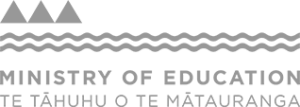CEO's Welcome
Public discussion around current approaches to address harm also continues to grow, and personal accounts of experiencing online harm are being highlighted. Sectors, organisations and people outside of the traditional online safety community are joining the discussion with their own unique insights and experiences. A spotlight is being shone on online harm – and along with it, discussion around societal expectations of how we behave online.
Ultimately, we are all looking for ways to provide protection for people while maintaining balanced and respectful public discourse. The complexities of the problem and the intricacies of finding practical solutions means that any approach needs careful consideration. Online safety is a space where many factors intersect and intertwine - wellbeing, education, technology, regulation, entertainment, industry and enforcement are just some of these.
One of the largest meetings of those involved in these intersecting fields is Netsafe’s 2018 Trans-Tasman Online Safety Conference being held in Auckland this October. The conference includes local and international speakers covering some of the biggest topics in online safety right now. A post-conference statement will be produced from the discussions being held and the expertise being shared. Our hope is that the statement will capture a large portion of the issues, challenges and solutions identified by the conference attendees.
The Crossroads conference is co-hosted with the Australian Office of the eSafety Commissioner and tickets are available now. I encourage anyone who has an interest in the conversation, issues and solutions around online harm to join us in October.
Martin Cocker
CEO, Netsafe

Report Contents
Reporting Overview
Between April – June 2018, Netsafe received 13% more reports in total than the previous quarter. The increase was spread across all three core report types, with the largest increase being scam and fraud reports. Netsafe has managed a total of 9,439 reports in the first half of the year.
April – June 2018 overview
TOTAL REPORTS (+13%*)
PERSONAL HARM COMPLAINTS (+8.3%*)
SCAM & FRAUD REPORTS (+17.3%*)
OTHER REPORTS (+7.6%*)
*percentage change based on reports made to Netsafe between 1 January 2018 – 31 March 2018.
2018 YTD overview (Jan-June)
YTD TOTAL REPORTS
YTD PERSONAL HARM COMPLAINTS
YTD SCAM & FRAUD REPORTS
YTD OTHER REPORTS
Reports by age group April - June 2018
1%
00-12
7%
13-17
6%
18-21
31%
22-40
36%
40-64
19%
65+
Reports by region April - June 2018
Reports by gender April - June 2018
59%
FEMALE (+3.7%*)
1%
GENDER DIVERSE (0%*)
40%
MALE (-5%*)
Personal Harm Reporting
Between April – June 2018 Netsafe received 706 personal harm complaints. This is 8.3% more than the previous quarter and a 50% increase from the same period in 2017. Personal harm complaints to Netsafe between January – June 2018 are up 46.5% compared to the same period in 2017 from 927 to 1,358.
Top personal harm categories reported April - June 2018
Who makes personal harm complaints? April - June 2018
75%
SELF REPORTED
8%
PARENT OR GUARDIAN
2%
OTHER FAMILY MEMBER
6%
EDUCATOR OR SCHOOL LEAD
2%
FRIEND
7%
OTHER
Scam and Fraud Reporting
Reported losses to scams and fraud between January – June 2018 have surpassed total reported losses in 2017 by $8.5M. Losses reported to Netsafe in 2017 totalled $10.1M and currently sit at $18.6M for the first half of 2018. 11% of scam and fraud reports to Netsafe between April – June 2018 involved financial loss.
Scam reporting trends
Scam & fraud snapshot April – June 2018
$6.1M
REPORTED LOSSES
366
REPORTS WITH $ LOSSES
$16,666
AVERAGE LOSS
Scam & fraud snapshot January – June 2018
$18.6M
YTD REPORTED LOSSES
760
YTD REPORTS WITH $ LOSSES
$24,473
YTD AVERAGE LOSS
Top scam categories reported April - June 2018
Netsafe & Spark scam outreach
Netsafe and Spark have partnered on scam education brochures and wallet cards which are now available at Spark stores around the country and will be dispatched with every new phone purchased from Spark. The brochures will also be available in branches of Age Concern and Senior Net, and will be translated in simplified Chinese, to assist the Chinese community. Find out more on our website.
Education & Engagement Update
Sean Lyons, Director of Education and Engagement
Netsafe has a series of exciting events coming up over the next few months.
The day before the conference Netsafe is holding an event designed specifically for educators – the Netsafe Online Safety Education Symposium. The Symposium will explore upcoming trends and challenges in helping young people to navigate online opportunities safely.
Those of you with a keen eye will have noticed a change in my role title from the last quarterly report. This is because Netsafe is bringing together our work in the school education sector, public education and partnerships under one team – Education and Engagement. If you’d like to know more about the team or how we could work together, we would love to hear from you.
If you’d like to get in touch you can email me at [email protected]

Engagement Update
Web & media April – June 2018
71,429
Netsafe.org.nz Website Visits
1
Netsafe Media Releases
336
Media articles mentioning Netsafe
Updates & events
Youth Action Squad – Y.A.S
Netsafe has a new project to gather the voices and ideas of young people.
Education Sector Update
Netsafe school support April – June 2018
152
Schools requesting support
41
Custom workshops for schools
13
Schools at Netsafe LIVE events
Updates & events
Netsafe Online Safety Grant spotlight
Life Education Trust: Digital Safety Videos Resources
Thanks to funding from the Netsafe Online Safety Grant and ASG, Life Education Trust has developed six short innovative videos. Attitudes and values are explored within each scenario, allowing students to identify appropriate and safe ways of connecting and communicating with others. The open-ended videos are now being rolled out across the Trust’s 45 mobile classrooms. They provide discussion opportunities to help develop students understanding and knowledge of the digital environment and how these integrate when working offline.
Find out more about the Netsafe Online Safety Grant on our website.

Netsafe Research Releases
New Zealand Teens and Digital Harm Report
While there is growing interest in examining young people’s experiences and use of digital technologies, including the challenges and risks teens face, evidence based on representative data in the New Zealand context has been unavailable. The study focused on the prevalence of New Zealand teens’ experiences with a range of unwanted digital communications in the previous year and the impact these experiences had on them, both emotionally and in carrying out everyday life activities
Become a Netsafe member
Netsafe members receive our quarterly reports before they are publicly released. Netsafe is an incorporated society with members from across the country. Our members represent organisations with an interest in building confidence in using digital technology. Membership is free, easy to apply for and it gives you and your organisation the opportunity to play a part in the development of online safety and the use of digital technology right here in New Zealand.
Find out more about being a Netsafe member, or apply to join today by completing our online form.
About Netsafe
Netsafe is New Zealand’s independent, non-profit online safety organisation. Taking a technology-positive approach to the challenges that digital technology presents, we work to help people in New Zealand take advantage of the opportunities available through technology by providing practical tools, support and advice for managing online challenges.
Find out more about Netsafe at www.netsafe.org.nz
The data in this quarterly report comes from reports made to Netsafe. *percentage change based on reports made to Netsafe in the previous quarter of 1 January 2018 – 31 March 2018. If you have queries about the information in this report, please email [email protected]
View the 1 January 2018 – 31 March 2018 quarterly report.
For media queries please email [email protected]



